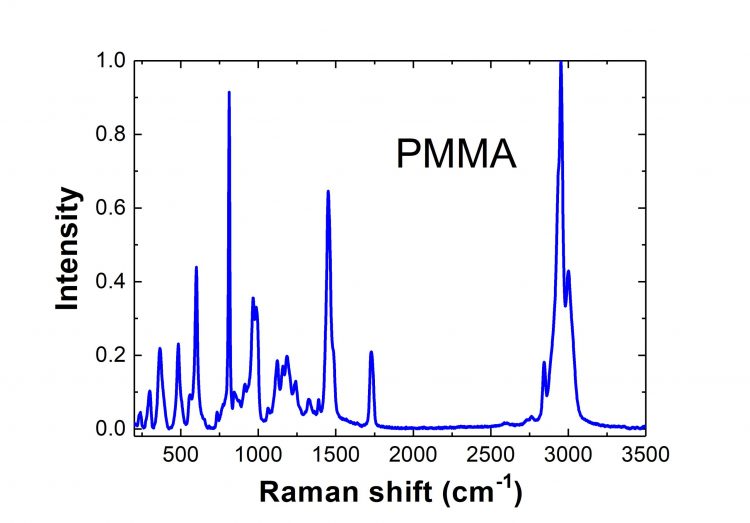Polymethyl Methacrylate Raman Spectrum
Polymethyl methacrylate (PMMA) is a transparent thermoplastic material with 92% light transmission and amorphous structure. It has exceptional optical properties in the visible, UV, and IR regions of the spectrum. PMMA is one of the hardest and most scratch-resistant thermoplastic polymers. This material can be used in various modifications in a wide range of applications in lighting, advertising, and construction. PMMA can be polymerized in the pores of silica sol-gel to build a solid-state dye laser. PMMA is also used to make polymer optical fibers utilized in data communication in local area networks; optical interconnects between electronic components, illuminated displays, optical amplifiers, and lasers in the visible region; as well as fiber-optic components, such as splitters, filters, optical switches, and sensors.
Contact us to get access to Raman Spectra Database more than 20 000 chemical and biological substances
Raman spectroscopy of PMMA
PMMA Raman spectroscopy is a simple, efficient, and relatively inexpensive nondestructive technique perfectly suitable for determining the monomer content of PMMA. Furthermore, PMMA Raman spectroscopy can be used to estimate the reaction enthalpies of partial monomer to polymer conversion given the thermal treatment of different duration and at different temperatures.
Raman Spectra Library
Raman spectroscopy can uniquely identify many chemical and biological agents.
All substances


